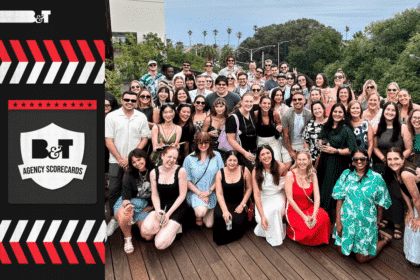Adobe CEO Shantanu Narayen (pictured) has told the 6500 strong audience of the Adobe Summit in Salt Lake City today that creative was one of the founding principles of good marketing and that advances in technology would create more, not less demand for creative services.
He said that the world was “brainstorming the future of digital marketing” and the “we live in an incredibly exciting time of change”.
“Creativity is still key; without great thinking there’s no inspiration for a customer to engage,” he said.
“It’s [the marketers] role that is crucial. We must all reinvent ourselves to make customer centricity the most important objective in your company,” he said.
Narayen’s view was later confirmed by Adobe CMO Ann Lewnes who said it was a fallacy to believe that technology would replace marketers.
“Media agencies will not become redundant. [Technology] won’t replace humans completely.
She said that media agencies have almost become technology consultants for businesses and were adopting Adobe’s Media Optimiser product “faster than anybody else”.
“It’s a fallacy to say these tools eliminate marketers. We need more headlines, more copy, more creative. Personalisation makes a huge demand for creative…the entire creative business is going through a revolution, we now it’s going to grow,” Lewnes told a media briefing.
Narayen warned however that marketers could spend all of their days “tracking down the latest trend”, and still not succeed in cataloguing every trick available to them. Instead he said that marketers should teach themselves that nothing else matters other than a singular focus on the customer.
Brad Rencher, senior vice president and general manager of Adobe’s Digital Marketing Business, said that it was the things that we loved that were killing traditional marketing. He said that his ability to check into his hotel from the taxi on the way from the airport to his hotel on his mobile phone, receive his room number and then open his door with his phone was wonderful for him, but disrupting the travel and leisure industry.
He argued that our expectation as a customer today meant that we did not want to receive a special on a product that we just bought. “We all know the clich√©s, but it’s easier said than done. The real-time enterprise moves at the speed of digital and it is redefining the central nervous system that runs our businesses.
“Not only do we have to integrate all of our solutions, we have to integrate with all of your other technologies at the enterprise level,” he said.
He said that he thought the burden of backward compatibility was what was holding marketing back.
“If we were to start from scratch, where would marketing be today? Making a connection with a customer… the intent is the same but the means are different.
“Legacy systems reflect the less than optimal business processes. An ad hoc approach to building a marketing stack will never work. We’re laboring under some obligations of analogue touch points.”
Rencher said that the seams between technologies we what “hinder the customer experience. An aggregated marketing system was less than the sum of its parts.”
In a wide ranging address that ran over the course of two and a half hours, interspersed with Adobe customer stories as well as product demonstrations, Rencher told his captive audience that he expected “entire centres of excellence wrapped around wearables” in the future and that he thought “a wearables department was just around the corner”.‚Äã
At the conference, Adobe has also announced a reseller agreement with SAP, read more about that here, and has unveiled the latest Marketing Cloud technologies which include advanced real-time profiling. Read more on that here.
David Hovenden from the Adobe Summit in Salt Lake City.
Image supplied from Adobe.
For more from the Adobe Summit Digital Marketing Conference, see the stories below.








